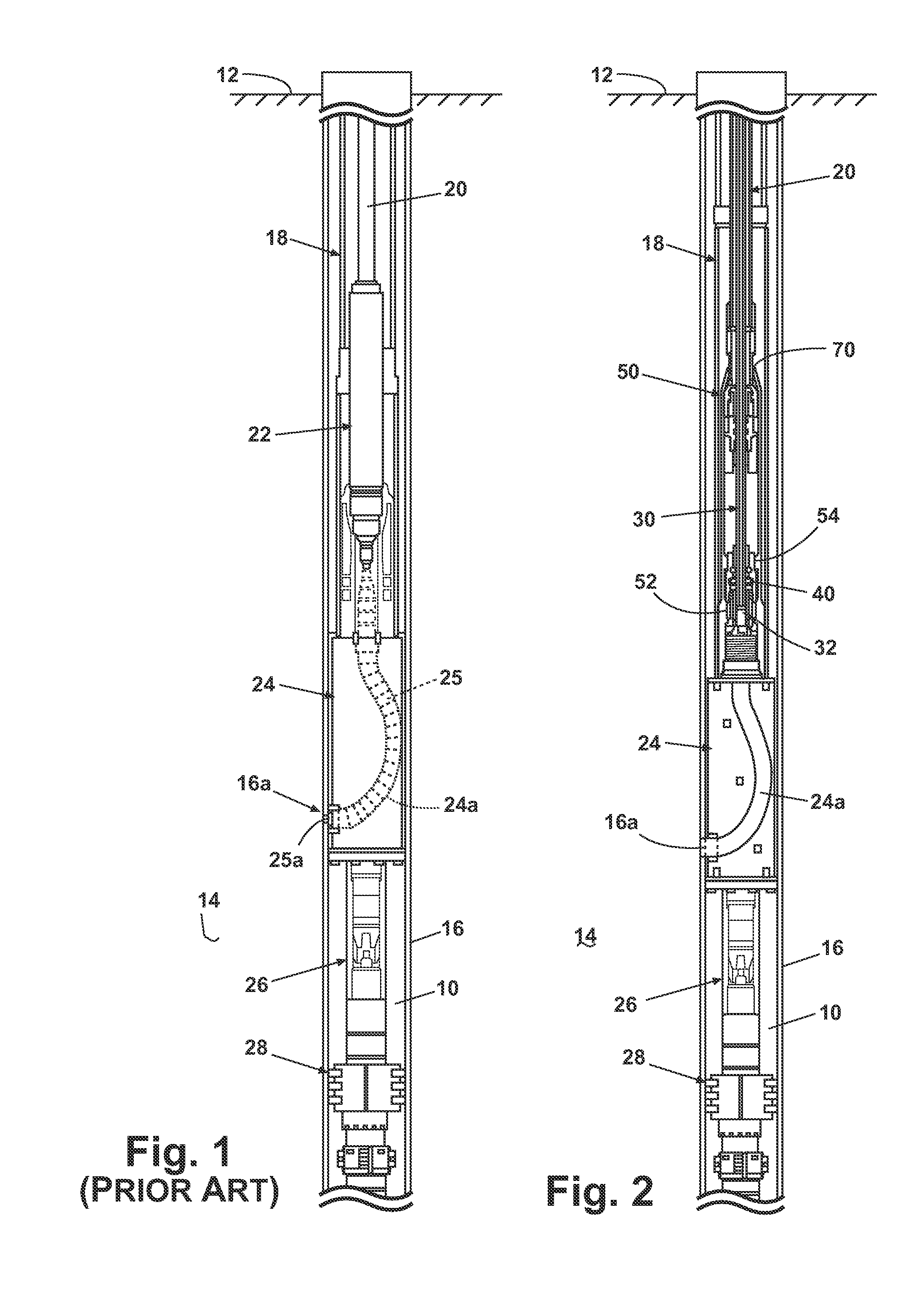Apparatus and Method for Conveyance and Control of a High Pressure Hose in Jet Drilling Operations
a technology of high-pressure hoses and hoses, which is applied in the direction of directional drilling, artificial islands, borehole/well accessories, etc., can solve the problems of limiting the depth at which the hose can be used, the prior approach using small-diameter flexible coiled tubing is limited, and the tubing strength is limited, so as to achieve the effect of convenient adjustment of the hose siz
- Summary
- Abstract
- Description
- Claims
- Application Information
AI Technical Summary
Benefits of technology
Problems solved by technology
Method used
Image
Examples
Embodiment Construction
[0064]FIG. 1 shows a prior assembly used for cutting lateral openings in the casing 16 of a vertical wellbore 10, and for subsequently redirecting a jetting hose out through the openings to jet lateral boreholes in formation 14. In general, the assembly includes a deflector shoe 24 supported at or near the bottom of the workstring, for example secured to the end of the workstring (“production”) tubing 18, and a flexible linked cutting tool 25 rotatably driven by a mud motor 22 lowered on the end of standard tubing string 20. Cutting tool 25 is selectively extended through a channel 24a in deflector 24 to place cutting head 25a in contact with the wellbore casing 16, forming lateral openings 16a for entry of a jetting hose into the surrounding formation 14 in known manner. The vertical and rotational positioning of deflector shoe 24, and thus of the cutting tool 25 and the location of the lateral holes 16a that it forms, is determined by an indexer device 26. The assembly is locked i...
PUM
 Login to View More
Login to View More Abstract
Description
Claims
Application Information
 Login to View More
Login to View More - R&D
- Intellectual Property
- Life Sciences
- Materials
- Tech Scout
- Unparalleled Data Quality
- Higher Quality Content
- 60% Fewer Hallucinations
Browse by: Latest US Patents, China's latest patents, Technical Efficacy Thesaurus, Application Domain, Technology Topic, Popular Technical Reports.
© 2025 PatSnap. All rights reserved.Legal|Privacy policy|Modern Slavery Act Transparency Statement|Sitemap|About US| Contact US: help@patsnap.com



